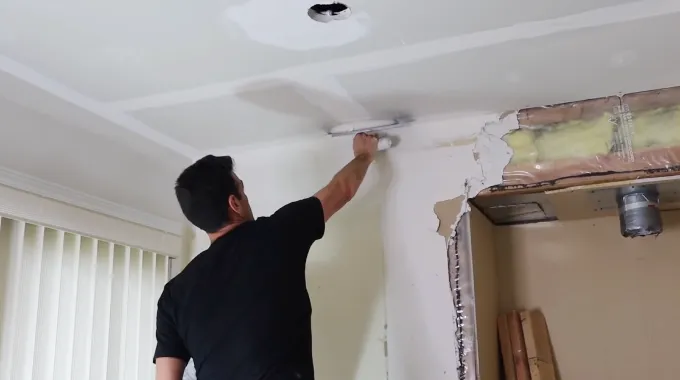Last Updated on March 20, 2023
Drywalling a ceiling or walls first can be an important decision regarding home remodeling. It’s not just a matter of aesthetics but also a matter of efficiency and cost. Drywalling either your ceiling or walls first can have different implications on the structure and insulation of your home.
The installation of a drywall ceiling is often the first step. Doing the drywall ceiling before other tasks ensures structural stability, insulation, and moisture protection for your home. But there are other factors to consider when deciding if you should do drywall ceiling first or not.
You need to consider your budget, layout, repairs needed, lighting situation, the shape and size of the room, the type of drywall you’re using, and your comfortability with installing drywall. In this post, we’ll explore these factors in more detail and explain why it is important to do drywall ceiling first.
Why Should You Do Drywall Ceiling First: 3 Reasons
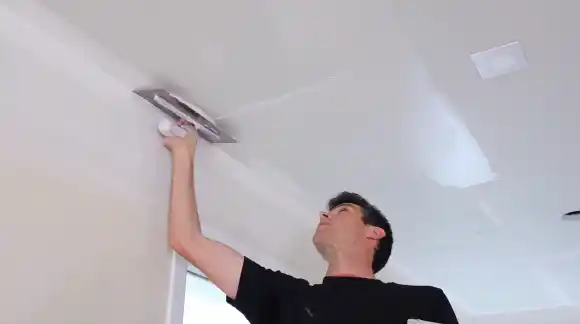
Doing the drywall ceiling first is a critical aspect of any interior construction project. It can help to ensure that the walls and ceilings are level when all is said and done, as well as provide additional insulation and soundproofing.
It also helps prevent water damage since ceilings are more prone to leaks and other moisture damage. Let’s take a closer look at why it’s more important to do the drywall ceiling first than doing the drywall sidewalls.
01. Structural Stability
By installing the drywall on the ceiling first, you can make sure that all of the joists are properly in place and secured before proceeding with any other work. This helps to ensure that there won’t be any shifting or bowing due to uneven weight distribution caused by an unbalanced ceiling-to-wall ratio.
Additionally, this process also provides extra support for larger objects, such as cabinetry or extended shelving units, which can cause a great deal of strain on unsupported drywall panels if installed after them.
02. Insulation
Adding insulation between the drywall and joists is extremely helpful for temperature control and soundproofing within a home or office space.
By installing insulation before putting up the drywall on the ceiling, contractors can ensure that it will remain in place without having to cut into or alter existing panels after they’re installed.
This also prevents air from leaking through cracks around joints in your finished walls and ceilings which often leads to uncomfortable drafts during cooler months.
03. Moisture protection
Drywalls are much more vulnerable to water damage than those placed on ceilings, so it’s vital that they receive some form of protection before installation begins.
Waterproof membranes can help keep moisture out while still allowing airflow. Sealing off openings is important for preventing moisture-related problems. Mold growth, rot, and unsightly stains can be prevented with this method.
This is especially beneficial if you live in an area with high humidity levels or frequent rainstorms; having proper moisture protection beforehand can save you lots of time and money in potential repairs later on down the line.
Key Factors to Consider
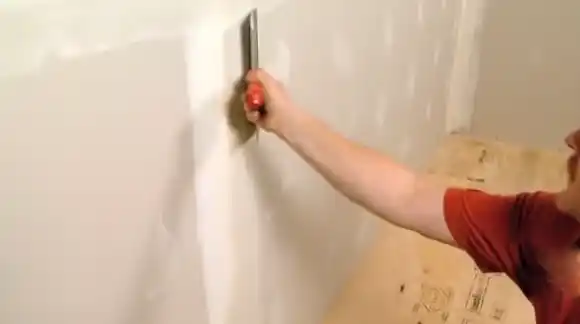
A few key factors to consider can help determine which part of your home should receive drywall attention, first ceiling or walls. Understanding these factors will ensure you take on your project efficiently and effectively, yielding superior results.
Let’s take a closer look at some key considerations you should make when determining whether to drywall your ceiling first or your walls. Here are some tips for deciding whether to hang drywall on your ceiling or walls first:
01. Budget
If your budget allows it, start by putting drywall on your walls before tackling any ceiling work. The reason is that ceilings tend to be more time-consuming and require extra steps (like scaffolding) due to their height above the ground.
By starting with the walls, you can get a better idea of how much time and money will be needed for additional supplies and labor costs while saving yourself some time.
02. Layout
Doors and windows should be considered when it comes to layout in order to avoid blocking access points. Wall panels could be installed first to provide enough space for the ceiling panels later on.
03. Repairs
If there is damage present on either surface (ceilings or walls), repairing this damage should take precedence over starting with either surface first when hanging drywall.
Doing this may mean taking more time out of installation as opposed to just getting straight into it with either ceiling or wall work, depending on which surface needs repair most urgently.
04. Lighting
Suppose lighting fixtures such as recessed cans are installed near where you will be working with drywall. In that case, these need to be considered when deciding what parts of your home should receive attention before others.
Installing ceilings before walls would allow easier access during installation. However, this risks blocking light fixtures if they’re located close together in comparison with one another across both surfaces (ceiling and walls).
05. The Size & Shape of the Room
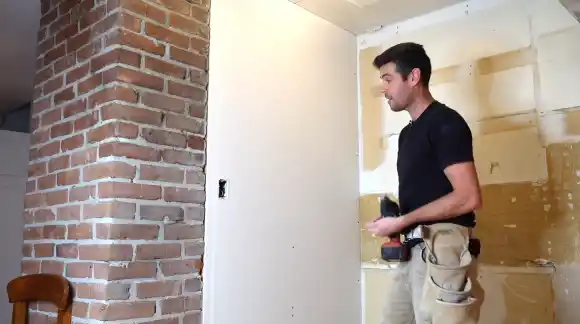
When deciding whether to drywall your ceiling before or after the walls, one factor to consider is the size and shape of the room you’re working in. If you have a large area that needs to be covered with drywall, it may be best to start with your walls and then move on to your ceiling.
This will give you more space for maneuvering around obstacles and keep you from having to cut too many pieces of drywall for each job.
On the other hand, if you have a smaller area that only requires one or two sheets of drywall, it might make more sense to tackle your ceiling first so that any cuts you make in one piece can easily fit into another.
06. The Type of Drywall Being Used
Another factor determining whether you should install your ceiling before or after your walls is the type of drywall used. If you’re using standard sheets of 1/2-inch gypsum board, it would usually be okay to put up either your walls or ceiling first.
However, if you’re using thicker than normal 5/8-inch boards for fire code requirements, installing the ceilings first may be necessary for them not to sag due to their weight and size.
Additionally, if there are any special features built into either product, such as soundproofing insulation, then this could further influence which product should go up first for everything else to line up properly later on down the line.
07. Your Comfort Level with Installing Drywall
Finally, when deciding whether or not to start with either product, it’s important that you take into account how comfortable you feel with installing drywall overall. If this is something that you do regularly and feel confident about doing correctly, then tackling either project shouldn’t pose many difficulties.
However, if this is something new to you, starting with ceilings rather than walls may be an easier way to get acclimated with all involved processes like measuring, cutting out holes, and screwing things in place.
It is important to take safety precautions when working with materials that could cause flying particles, such as by wearing gloves, goggles, and a dust mask. Doing so will help reduce the risk for yourself and others who might be nearby.
Where Do You Start When Hanging Drywall?
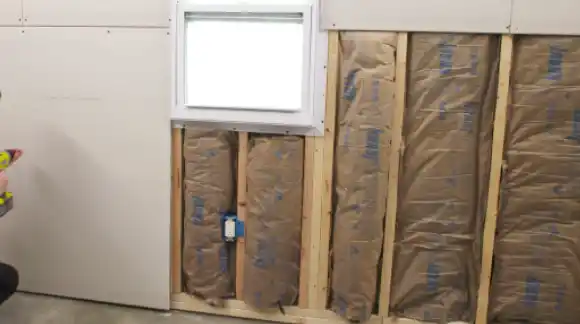
When hanging drywall, the first step is to measure the space for the drywall and then cut it to size. This is typically done by measuring the length and width of the area and then cutting a piece of drywall that is slightly larger than the measurements.
Once you have cut the right size piece, you will need to make sure it fits in properly, making sure that all four corners are flush with the surrounding walls. Using shims or spacers may also be necessary to ensure that everything lines up correctly.
Do You Stagger the Seams of the Drywall on the Ceiling?
Yes, when hanging drywall on a ceiling, it is important to stagger the seams so that there are no continuous seams running through your ceiling. Staggering will help create a smoother look overall and can also help reduce cracking over time due to movement in your home.

To do this, you should start by overlapping each sheet by 12 inches so that no two seams run parallel with one another. You will always want to overlap these seams so they don’t line up directly over studs or joists, which could cause cracking due to movement in those areas.
Does Drywall Have to End on a Stud?
Yes, the drywall must end on a stud or some other structural component, such as a joist or truss member. It is important to use screws when hanging drywall to ensure adequate support and prevent warping or settling. This is especially important in areas subject to moisture or temperature changes.
Do You Leave a Gap Between Drywall Sheets to the Ceiling?
Yes, when installing drywall near ceilings, it is important to leave at least a 1/8-inch gap between sheets so that air can flow freely around them.
This helps ensure proper drying times during installation as well as preventing warping or settling once everything has been completed and painted.
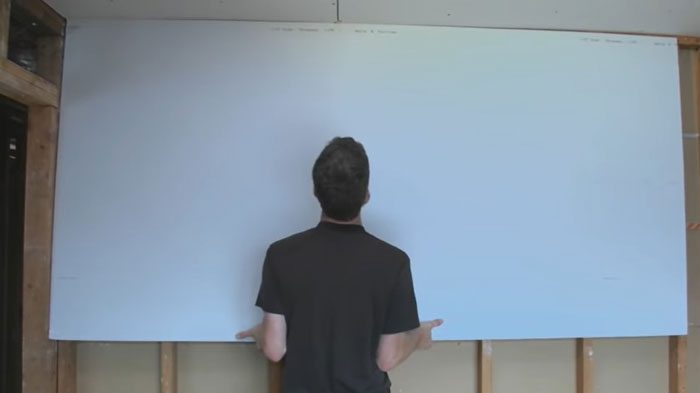
Additionally, leaving this gap helps prevent cracking from occurring down the line due to contraction and expansion from temperature changes in your home.
Should Drywall Touch the Floor?

No, you should never let drywall touch your floor, as this can cause a number of problems over time, including mold growth along with cracks appearing due to expansion and contraction from temperature fluctuations throughout the year.
Suppose there is no foundation wall behind where you want your drywall installed. In that case, it is best practice to leave a 1/2-inch gap between the bottom row of drywall and the floor. This will help prevent mold growth and cracks from appearing over time due to natural expansion and contraction in your home.
Conclusion
Ultimately, installing drywalls on your ceiling first rather than doing them on your side walls is a smart move for anyone undertaking interior construction projects.
Not only does it provide structural stability for heavier items such as shelving units, but it also ensures optimal insulation coverage and moisture protection which is essential for any room regardless of climate or region where you live.
With thorough research and consideration, it is possible to make an informed decision that best suits your needs for any project involving drywalling, either ceilings or walls, first.
